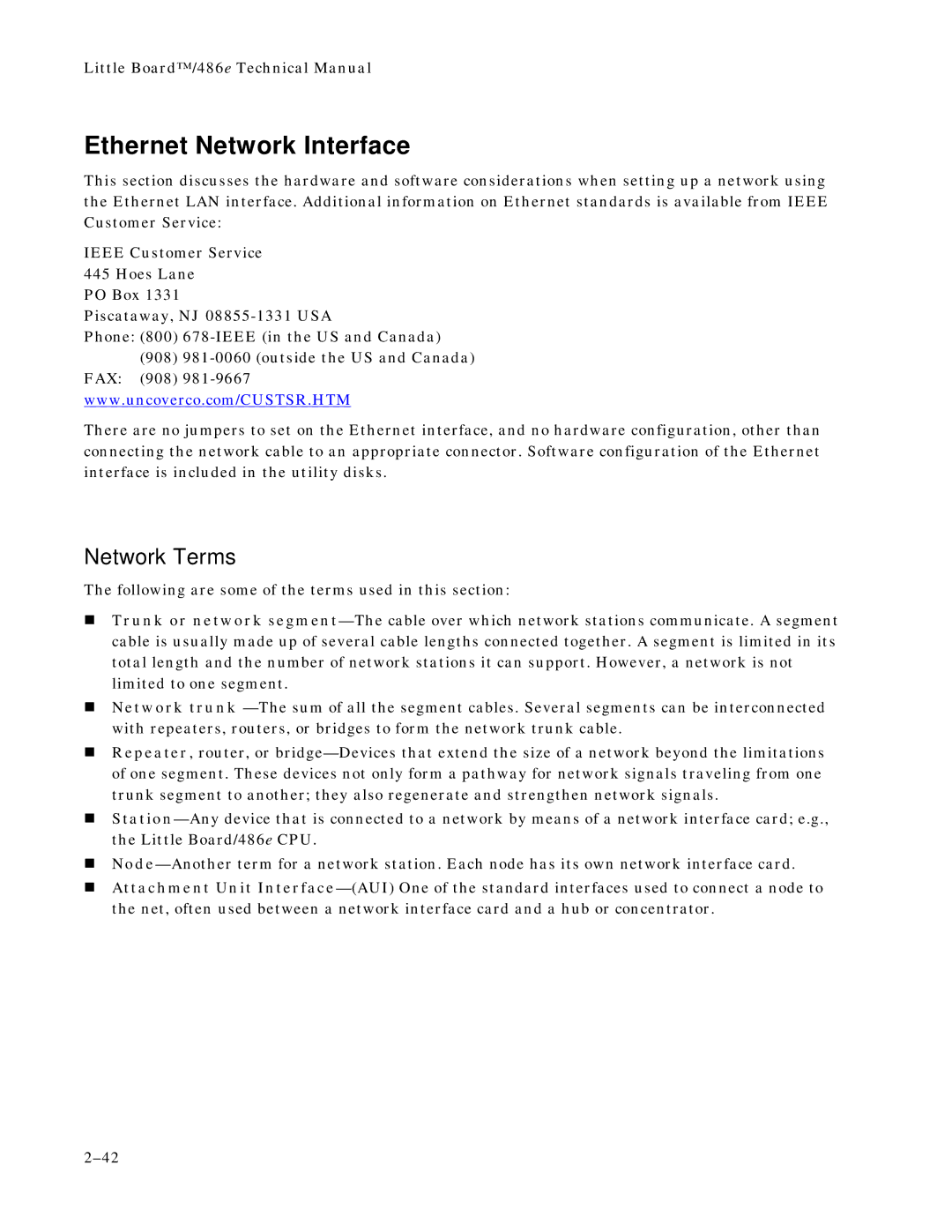Little Board™/486e Technical Manual
Ethernet Network Interface
This section discusses the hardware and software considerations when setting up a network using the Ethernet LAN interface. Additional information on Ethernet standards is available from IEEE Customer Service:
IEEE Customer Service 445 Hoes Lane
PO Box 1331
Piscataway, NJ 08855-1331 USA
Phone: (800) 678-IEEE (in the US and Canada)
(908)981-0060 (outside the US and Canada) FAX: (908) 981-9667 www.uncoverco.com/CUSTSR.HTM
There are no jumpers to set on the Ethernet interface, and no hardware configuration, other than connecting the network cable to an appropriate connector. Software configuration of the Ethernet interface is included in the utility disks.
Network Terms
The following are some of the terms used in this section:
!Trunk or network segment—The cable over which network stations communicate. A segment cable is usually made up of several cable lengths connected together. A segment is limited in its total length and the number of network stations it can support. However, a network is not limited to one segment.
!Network trunk —The sum of all the segment cables. Several segments can be interconnected with repeaters, routers, or bridges to form the network trunk cable.
!Repeater, router, or bridge—Devices that extend the size of a network beyond the limitations of one segment. These devices not only form a pathway for network signals traveling from one trunk segment to another; they also regenerate and strengthen network signals.
!Station—Any device that is connected to a network by means of a network interface card; e.g., the Little Board/486e CPU.
!Node—Another term for a network station. Each node has its own network interface card.
!Attachment Unit Interface—(AUI) One of the standard interfaces used to connect a node to the net, often used between a network interface card and a hub or concentrator.
